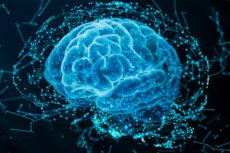
神经元固然重要,但它们并非大脑信息传递过程中的唯一参与者。事实上,位于神经细胞外部、由一簇簇名为硫酸软骨素的细胞外基质分子组成的“软骨”,在大脑获取和储存信息的能力中发挥着关键作用。
发表在《细胞报告》杂志上的一项研究描述了大脑可塑性的新机制,即神经连接如何响应外部刺激而发生变化。该论文的标题是《突触周围基质的焦点簇促进小鼠活动依赖性可塑性和记忆力》。
这项工作是哈佛医学院、特伦托大学和马格德堡德国神经退行性疾病中心 (DZNE) 合作的成果。
尤里·博齐和加布里埃莱·切利尼表示:“感官技能和理解周围环境的能力依赖于大脑活动,大脑活动使我们能够感知和处理来自外界的刺激。通过大脑,我们能够获取和存储新的信息,并记住我们已经学过的信息。”
这种令人着迷的现象之所以可能存在,是因为大脑能够根据外界刺激不断改变神经连接(突触)的结构和有效性。这种能力被称为突触可塑性。了解突触变化的发生机制以及它们对学习和记忆的影响是神经科学面临的重大挑战之一。
尤里·博齐(Yuri Bozzi)是特伦托大学教授,也是该论文的共同第一作者。加布里埃尔·切利尼(Gabriele Cellini)是该研究的第一作者。切利尼于2017年开始从事该项目,当时他是萨宾娜·贝雷塔(Sabina Berretta,麦克莱恩医院和波士顿哈佛医学院)实验室的博士后研究员,并在特伦托大学博齐实验室担任博士后研究员期间完成了这篇科学论文的发表。
该研究的核心是硫酸软骨素,这种分子因其在关节中的作用而闻名,它在大脑可塑性中也发挥着重要作用,是大脑细胞外基质的组成部分,最初由 Alexander Dityatev 博士的团队于 2001 年发现。
2007年,一项日本研究描述了硫酸软骨素簇的存在,它们呈圆形,似乎随机分布于大脑各处。然而,这项研究后来被人们遗忘,直到萨宾娜·贝雷塔的转化神经科学实验室将这些结构重新命名为CS-6簇(CS-6代表硫酸软骨素-6,该名称精确地指示了它们的分子组成),并表明这些结构与神经胶质细胞相关,并且在精神病患者的大脑中数量显著减少,才使它们重新回到了科学界的聚光灯下。
随后,2017 年,新加入 Berretta 实验室的 Gabriele Cellini 受命揭示这些簇的功能。
“我们首先仔细检查了这些结构,并以极高的分辨率对其进行了成像。我们发现它们本质上是由CS-6涂层突触组成的簇,这些突触排列成清晰可辨的几何形状。随后,我们鉴定出了一种新型的突触组织,”科学家们说道。
“此时,我们必须发挥一点‘实验创造力’;通过结合行为学、分子学和复杂的形态学方法,我们意识到这些包裹在 CS-6 簇中的化合物会随着大脑的电活动而发生变化。”
“最后,感谢与马格德堡 DZNE 的 Alexander Dityatev 的合作以及他团队的 Hadi Mirzapurdelawar 的努力,我们降低了海马体(负责空间学习的大脑区域)中 CS-6 的表达,并证明了 CS-6 的存在对于突触可塑性和空间记忆是必需的,”Bozzi 和 Cellini 指出。
“这项研究为研究大脑功能开辟了新途径。CS-6 簇内不同神经元上形成的所有突触都有可能对特定的外部刺激做出共同反应,并参与旨在学习和记忆过程的共同功能。”他们指出。
Dityatev 和 Berretta 补充道:“它们似乎代表了多细胞层面信息整合和关联形成的新基质。”
这项工作是多个实验室合作的成果,包括转化神经科学实验室(Sabina Berretta;麦克莱恩医院 - 哈佛医学院,波士顿)、神经发育障碍研究实验室(Yuri Bozzi;CIMeC - 特伦托大学脑科学跨学科中心)和分子神经可塑性实验室(Alexander Dityatev;DZNE Magdeburg)。

